Star Wars & Ancient Rome Posted by Brittany Britanniae on Dec 31, 2014 in Roman culture
Salvete Omnes,
So over the last week of November, there was the trailer release of Episode VII of the Star Wars series. For those of you who have been living under a rock, here is the trailer:
For any fans, one can actually see that there are several parallels between Star Wars and Ancient Rome. I have prepared to list quite a few of them. Please note that I am not going to address the extended lore (video games, literature, tv shows), but all the points I address are made and seen within Star Wars: Episodes I-VI.
1.Politics & Political Figures: Republics, Empires, Dictators, & More.
If one would to consider Ancient Rome, one would know that prior to the Empire (ruled by the Caesars) it was a Republic (consuls and co-consuls). In Star Wars, the Galactic was known as the Galactic Republic or the Old Republic and eventually became the Empire ruled by the Emperor.
Both Julius Caesar and Senator Palatine were in their position much longer than they were supposed to be. They were given extended rule and power for the sake of the safety of the Republic.
However, they were both seized with either ambition or vanity and continued to pursue more power and a higher title. Both Palpatine and Julius Caesar were betrayed by someone they trusted, and were killed. (Brutus and Vader).
Another similarity between the Roman Empire and the Star Wars movies is the way that the two became Empires. They were both Republics, and both civilizations had a strong amount of confidence that the Republic would exist forever, in both Star War’s Galactic, and in Ancient Rome. In both civilizations there was a series of wars fueled by the Republic’s desire to conquer and expand. In the history of Ancient Rome, these wars were primarily the Punic Wars with Carthage. In Star Wars’ lore, there were a series of different wars namely The Old Sith Wars, the New Sith Wars, and The Clone Wars.
2. Games & Entertainment: Racing, Fighting, & More
The Star Wars franchise has two distinct scene that resonate with Ancient Rome: The Circus Maximus and the Colosseum. This first scene shows the pod racing clip from Episode I.
This reminds me of the Ben Hur racing scence that takes place in the Circus Maximus. While, the other scene takes place in an alien Colosseum:
3. Architecture
There are countless scenes in Stars Wars that are reminiscent of Ancient Roman scenery, architecture, etc.
The two prime examples would have to be Naboo’s governmental buildings and the Pantheon AND the Jedi Temple and Ancient Egyptian. I draw the Egyptian comparison only the light that Ancient Rome and Egypt had close ties during the Empire.
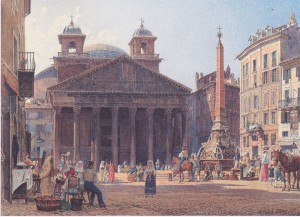
An 1835 view of the Pantheon by Rudolf von Alt, showing twin bell towers, often misattributed to Bernini. Courtesy of Wikicommons.
If one were to look at the building and structure of the Jedi Temple in comparison to some Ancient Egyptian architecture.
Do you see similarities? Well I did.
I do look forward to anyone’s parallels they can bring to this conversation.

Build vocabulary, practice pronunciation, and more with Transparent Language Online. Available anytime, anywhere, on any device.
About the Author: Brittany Britanniae
Hello There! Please feel free to ask me anything about Latin Grammar, Syntax, or the Ancient World.



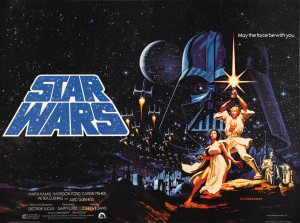
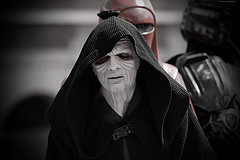
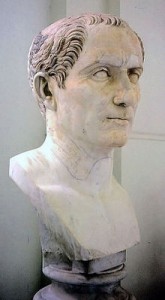
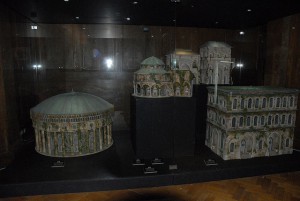
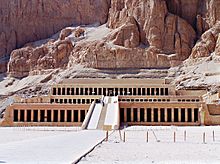

Comments:
Daniel J Sorenson:
FYI: Episode VII has not yet been released – only a short trailer has. As far as more parallels, there are some similar names and some Roman/Latin-sounding names:
Palpatine is similar to Palatine Hill, the center most of the 7 hills Rome was founded on.
Darth Tyranus sounds very Latin-like…like 2nd declension masc. adj.
In the Star Wars EU, there is Darth Malgus…very Latin-like. The “Mal” part also a Latin root.
I’m sure there are more. What I’d really like to see is a one of the full movies translated into Latin! A short story would be a good start. Do you know anyone who would do this?
Rebecca Jessup:
Yoda’s native language, whatever it was, used Latin word order. Yoda generally puts the verb at the end of the sentence, as Latin tends to do. Example: Yoda: “When nine hundred years old you reach, look as good, you will not, hmm?” That sentence in Latin would be something like, “Num ubi nongentos annos habueris, bonus non videberis?” (Corrections welcome.) The verbs “habebis” and “videberis” are placed in the sentence just as “Reach” and “you will not”. The entire sentence structure is Latinate.
Magistra Cannon:
I could see how The Force could be analogous to the divine favor or miraculous assistance of mythological deities. Also, if you were to think of Luke and Leia as a modern twist on the story of important twins conceived out-of-wedlock by a forbidden romance between a powerful, dark lordly figure and a princess who is unable to raise the babes herself… It sounds a little like the creation myth of Rome. In fact, I believe there is an essay about Star Wars and Mythology in one of the chapters of Powell’s “Classical Mythology.”
Estimator:
Thank you, very usefull,
Craig:
Palpatine is more similar to Augustus, than Julius Caesar. It was he that the Senate garnered with more and more honors, privileges, and power in the hopes of averting further internal crises.
Arnie:
Tarquin ~= Tarkin
Sullust ~= Sallust
In Episode IV (early decades of the Empire), the Senate is formally dismissed and informally dismissed as impotent/perfunctory, similar to the Senate over throughout imperial Rome.
George must have absorbed a lot.
David:
I’d like to argue that Vader represents Caesar. Both took part in switching a Republic to an Empire. Both did this indirectly, Caesar being killed before he could become emperor and instead Augustus becoming emperor, and Vader being a servant of Palpatine who would become emperor. Also both Caesar and Vader did not entirely fight for the Empire. Caesar had turned down the role of king when it presented itself, and Vader had a change of heart in episode VI. If you buy into the theory that Brutus was Caesar’s son, you could compare Brutus to Luke. Both had betrayed their fathers by fighting for the Republic instead of the Empire.